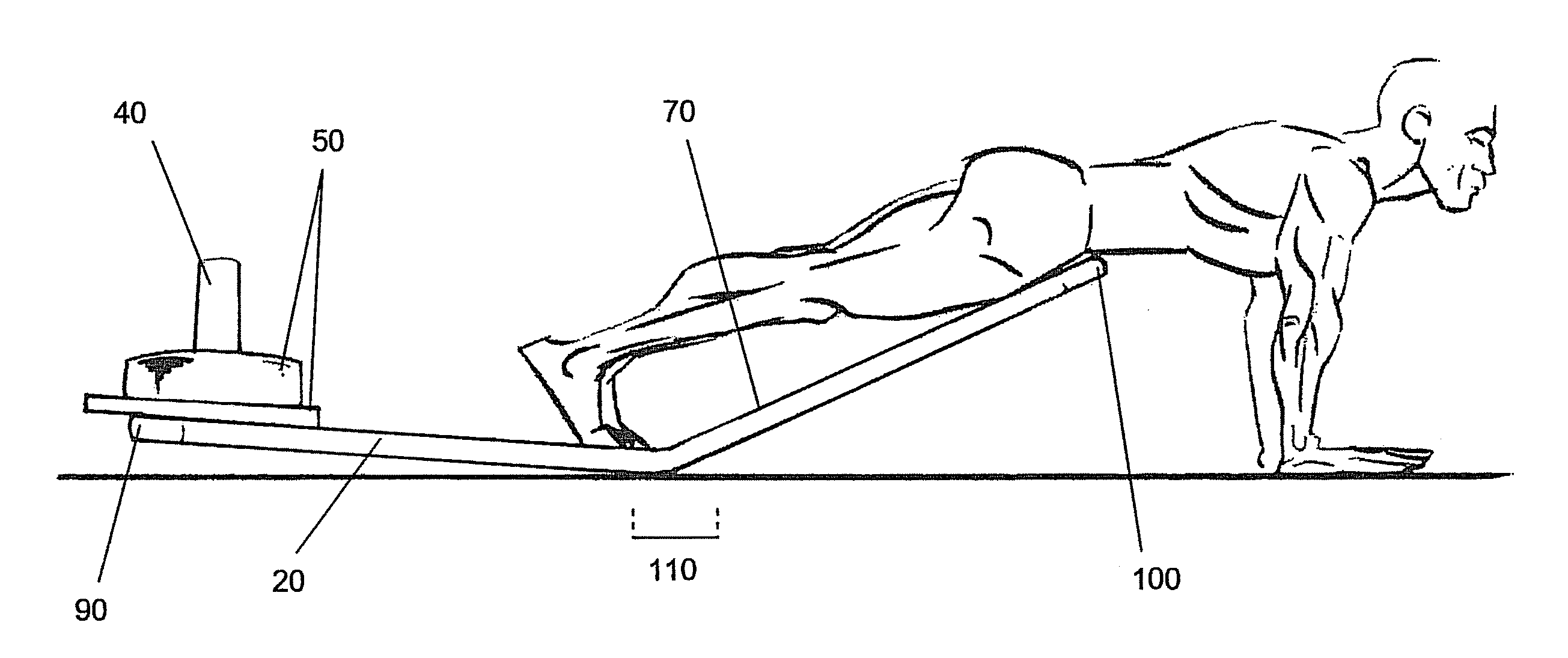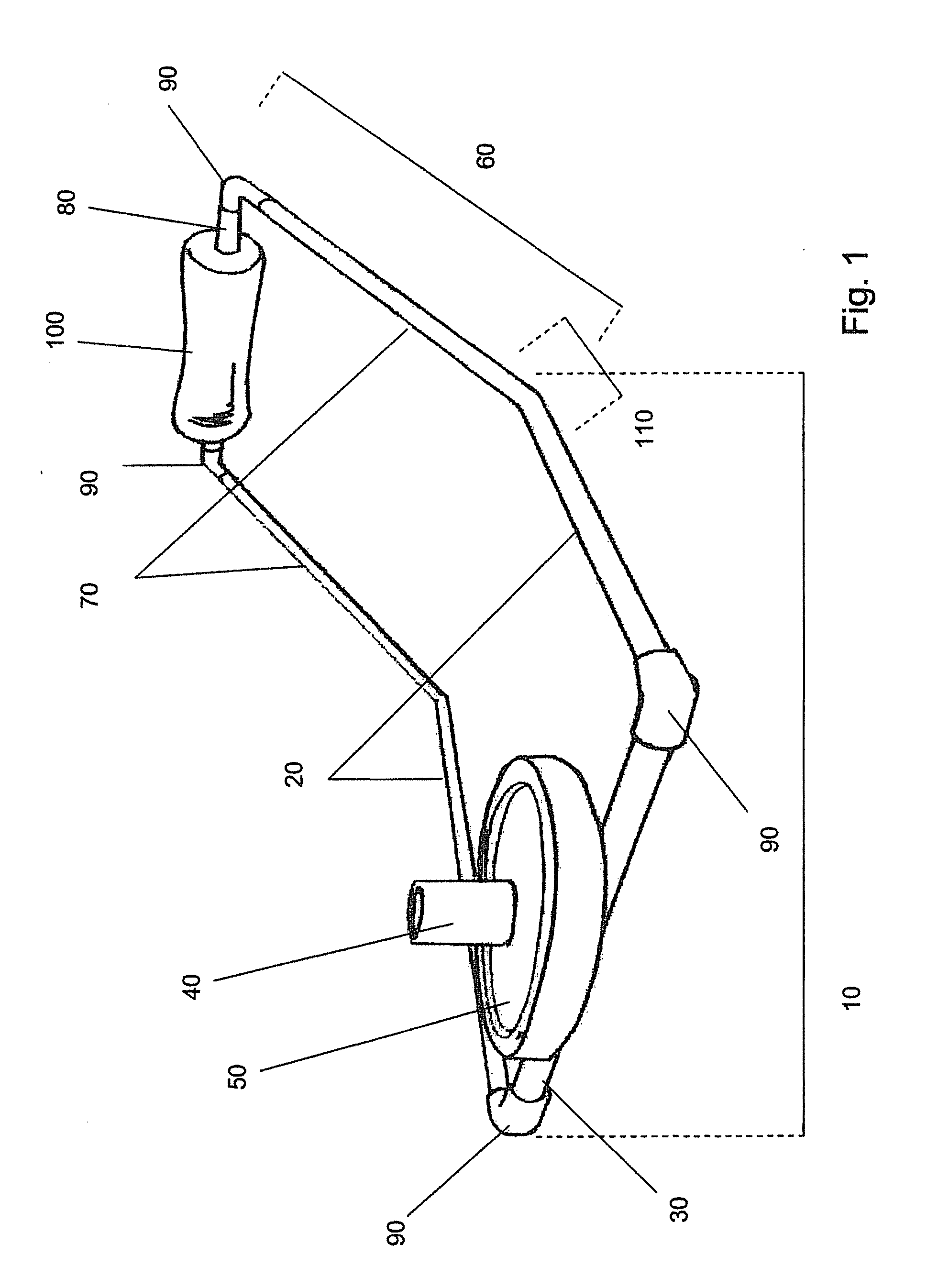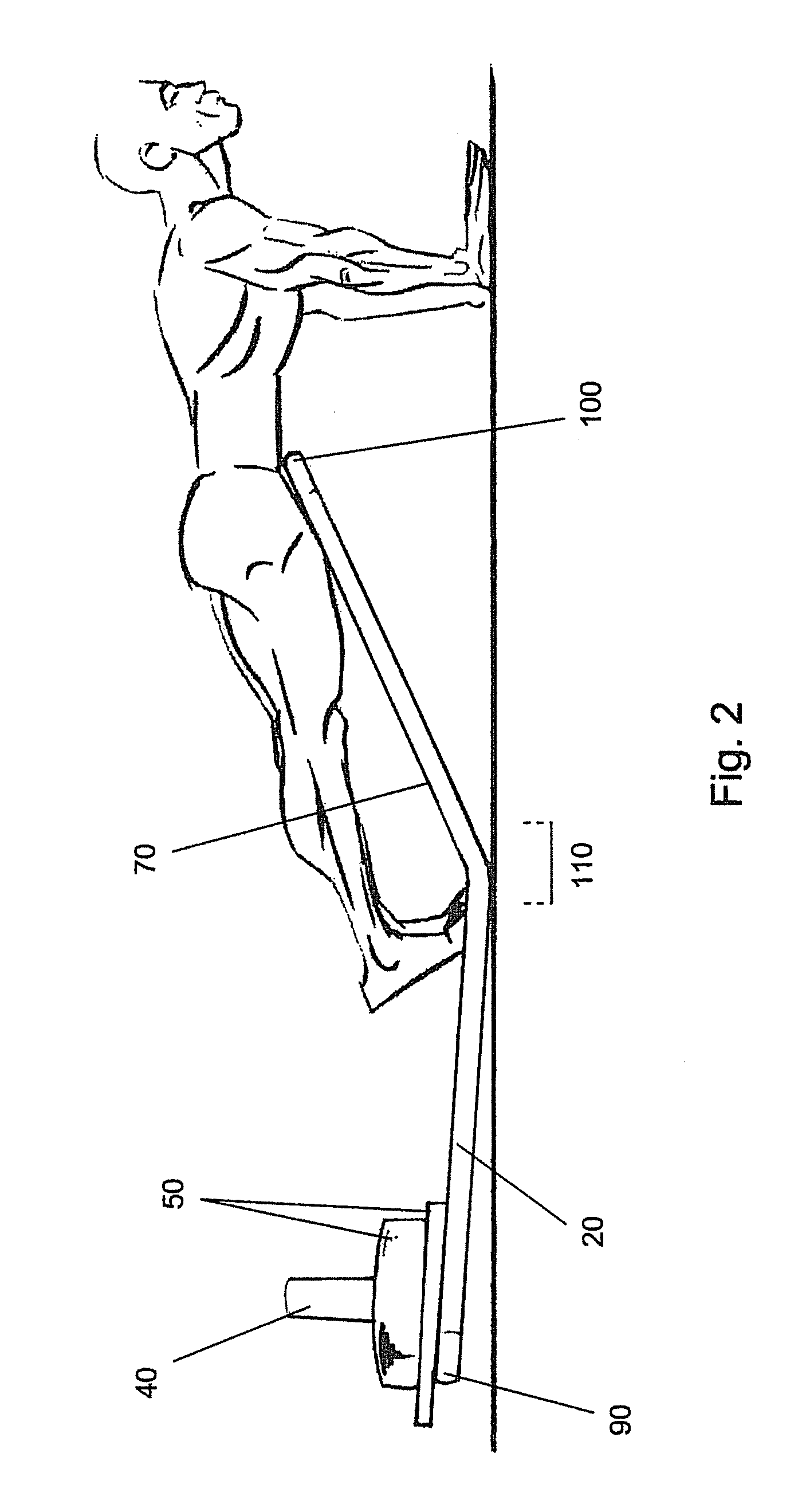Assisted-exercise apparatus
a technology of assisted exercise and weight, which is applied in the direction of sport apparatus, weights, stilts, etc., can solve the problems of not being able to adjust the weight during weight lifting, creating challenges for people physically disabled or recovering from injuries, and not being able to access all, so as to increase the weight on the weight pin, increase the assistance user, and increase the effect of upfor
- Summary
- Abstract
- Description
- Claims
- Application Information
AI Technical Summary
Benefits of technology
Problems solved by technology
Method used
Image
Examples
Embodiment Construction
[0023]The present invention will now be described more fully hereinafter with reference to the accompanying drawings, in which preferred embodiments of the invention are shown. This invention may, however, be embodied in many different forms and should not be construed as limited to the embodiments set forth herein. Rather, these embodiments are provided so that this disclosure will be thorough and complete, and will fully convey the scope of the invention to those skilled in the art.
[0024]With reference to FIG. 1 and according to one embodiment of the present invention, the assisted-exercise apparatus consists of a user support, weight, and a rocker frame interconnecting said user support and weight. The invention may take the shape of a rectangle, such as the present embodiment, or a triangle or a “T”, or any other shape not enumerated here, without deviating from the scope of the invention.
[0025]The frame consists of a lower section and upper section. The lower section consists o...
PUM
 Login to View More
Login to View More Abstract
Description
Claims
Application Information
 Login to View More
Login to View More - R&D
- Intellectual Property
- Life Sciences
- Materials
- Tech Scout
- Unparalleled Data Quality
- Higher Quality Content
- 60% Fewer Hallucinations
Browse by: Latest US Patents, China's latest patents, Technical Efficacy Thesaurus, Application Domain, Technology Topic, Popular Technical Reports.
© 2025 PatSnap. All rights reserved.Legal|Privacy policy|Modern Slavery Act Transparency Statement|Sitemap|About US| Contact US: help@patsnap.com



